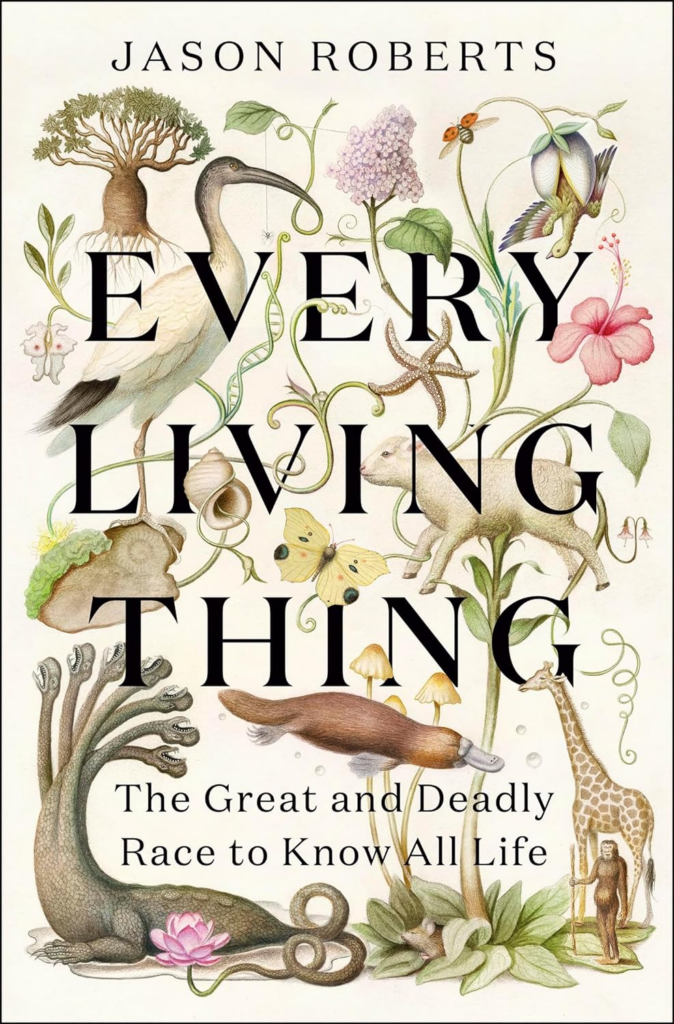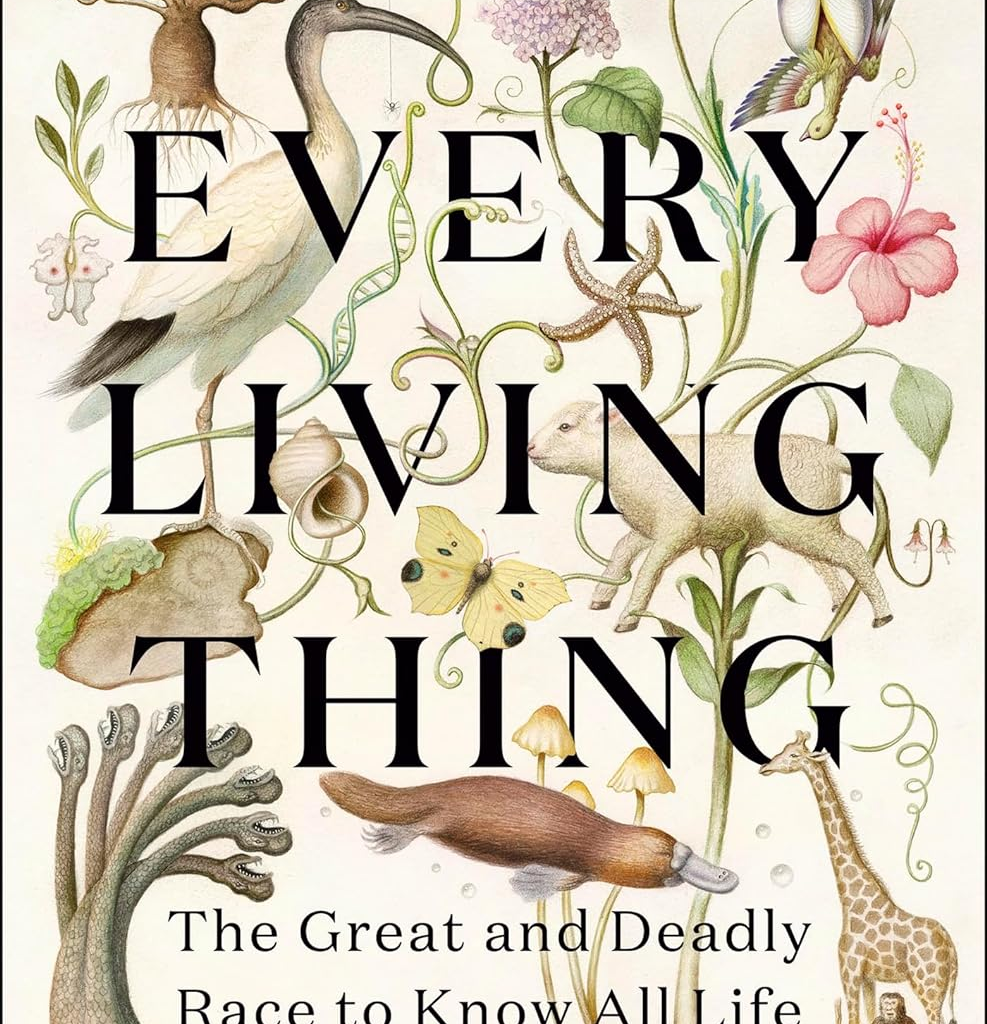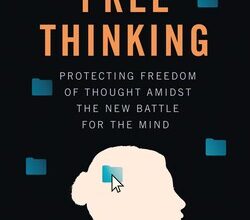Review of Every Living Thing: The Great and Deadly Race to Know All Life* by Jason Roberts, Riverrun, 2024.

‘God Himself guided him’, it was said of the famous Swedish taxonomist, Carl Linnaeus (1707-1778). ‘God has given him the greatest insight into natural history, greater than anyone else has enjoyed. God has been with him, wherever he has gone…and made him a great name, as great as those of the greatest men on earth.’ ‘Nobody has been a greater biologist or zoologist’, gushed a contemporary admirer. And when Linnaeus wrote a medical treatise, a reviewer observed that ‘We may justifiably assert that no one who has studied medicine, pharmacy or surgery can do without it; indeed that it cannot be but of use and pleasure to the most learned medical men.’
Linnaeus himself was the anonymous author of these and many other plaudits. He was, simply, an appalling person. Confident that he would never be contradicted, he embellished his field notes, making his journeying sound far more epic than it was. Scrambling up the greasy pole of academic preferment, he lied about his academic collaborations and surrounded himself with sycophants. He lent apparent scientific credibility to racism, declaring that there were different races of Homo sapiens, with fixed attributes. Homo sapiens europaeus, he announced, was inherently ‘governed by laws’, unlike the African subspecies, Homo sapiens afer, which was ‘governed by whim’ and was ‘sly, slow [and] careless’. He was a chauvinist at home, believing his own daughters unworthy of education, and an unabashed nepotist who arranged for his 22-year-old son, who had no degree and no love of botany, to be appointed adjunct professor of botany (on his father’s death, he became a full professor).
He was also wrong: emphatically, repercussively, corrosively wrong about the natural world.
There were, he thought towards the end of his working life, 40,000 species: 20,000 vegetables, 3,000 worms, 12,000 insects, 200 amphibious animals, 2,600 fish, and 200 quadrupeds. It is now estimated that there might be up to a trillion species, and even lower estimates have the number in the millions or hundreds of millions.
For Linnaeus, species were fixed and had been since the time of the Biblical creation. It was sacrilegious to think otherwise. ‘We reckon the number of species as the number of different forms that were created in the beginning. . . . That new species can come to exist in vegetables is disproved by continued generations, propagation, daily observations, and the cotyledons. . .’

Odious, dishonest, bigoted, and mistaken. Yet Linnaeus is the only taxonomist of whom most have heard. His method of denoting species, by reference first to the genus (such as Homo), is ubiquitous. And so is his assumption that nature can and should be corralled into synthetic conceptual structures.
He had an exact contemporary, an almost forgotten Frenchman, Georges-Louis Leclerc, Comte de Buffon (1707-1788), who shared Linnaeus’ project of producing a comprehensive account of life on earth but shared few of Linnaeus’ vanities, moral failings, or biological errors.
Buffon was contemptuous of self-seekers, calling contemporary glory a ‘vain and deceitful phantom’. He campaigned vigorously against dividing humans into races, let alone ascribing pejorative attributes to each race, and his closest friendship was with a woman he regarded as his muse and his intellectual superior. He was suspicious of systems of classification, acknowledging their usefulness, but realising that nature was in a state of constant change and that no artificial system could do justice to the dazzling complexity of the real wild world. He was robustly critical of Linnaeus. While all systematic approaches to nature were flawed, he wrote, ‘Linnaeus’ method is of all the least sensible and the most monstrous.’ ‘We think that we know more because we have increased the number of symbolic expressions and learned phrases. We pay hardly any attention to the fact that these skills are only the scaffolding of science, and not science itself.’
Since nature was mysterious, liquid, and vast (there were, he suspected, many more than 40,000 species) it could only properly be approached, thought Buffon, with humility and uncertainty. Human presumption must be shed at the laboratory door. He was a true Enlightenment sceptic; no questions were out of bounds. The Enlightenment did not stay that way for long, but while it did, it was glorious, and Buffon adorned it.
James Roberts’ scintillating account of these two lives is an overdue and important attempt to disinter Buffon from the obscurity in which he has long languished. He is not the first writer to try (the most systematic effort is Jacques Roger’s 1997 Buffon: A Life in Natural History), but he is far and away the most successful. Roberts is a sprightly storyteller who wears his considerable learning lightly. The result is a compellingly readable piece of intellectual history; a salutary account of enmeshed personality and ideas, and so of the way that science itself works.
Lionized Linnaeus is the archetype of many modern biologists. It started for him, as for them, with a childhood love of the natural world which soon curdled into ambition—an ambition not to understand, but to force the facts into a set of self-created and self-satisfied categories. It is a very modern story: rigour becomes fundamentalism; a search for the truth becomes a quest for new ways to affirm old orthodoxies; journeying becomes colonialism. ‘Objects are distinguished and known by classifying them methodically and giving them appropriate names’, wrote Linnaeus. ‘Therefore, classification and name-giving will be the foundation of our science.’ Self-reference and self-affirmation, in other words, are what science is all about.
And the forgotten Buffon is the antitype of many modern biologists. His boyhood wonder never left him; never became sclerosed into a reverence for categories rather than real plants and animals. ‘The true and only science is the knowledge of facts’, he said. Theory, however elegant and revered, must always give way to reality.
Linnaeus was the fifth generation in a line of preachers and was expected to occupy the hereditary pulpit, but at the age of four, hearing his father declaim the incantatory Latin names of plants, he had an epiphany. It made him a botanical obsessive and set biology’s course for the next two hundred years.
For nine miserable years, he was marinated in Latin and Greek at school. He was known by teachers and pupils as the ‘Little Botanist’ (he was never more than five feet tall). He failed to make the grade for the Christian ministry. His teachers told his outraged father that Linnaeus should become a tailor or a shoemaker instead. It is perhaps unfortunate for science that he did not.
His father sought advice. What could be done with his hopeless son? A friend of the family suggested medicine and offered to coach Linnaeus for entry to medical school. It wasn’t as prestigious as preaching, but it was better than shoemaking. Linnaeus duly went (via a false start in Lund) to medical school in Uppsala.
There, in 1729, in a garden, there was a fateful meeting. Professor Olof Celsius, who was trying to write a book about the plants mentioned in the Bible, saw a tiny, ragged student drawing a flower badly. Celsius asked him what the flower was, and the student, who was Linnaeus, responded using a ludicrously difficult term forged by the French botanist Joseph Pitton de Tournefort. It showed that though Linnaeus could not draw, he had spent many hours learning Tournefort’s 698 categories. It was a formidable achievement. Celsius impulsively took Linnaeus under his wing, fostering Linnaeus’ passion for plants and recruiting him to work on the book about Biblical plants.
Celsius proved a loyal and powerful mentor. It was largely due to him that Linnaeus, in 1730, as a second-year student who had never taken a single class in botany, became de facto professor of botany. This astonishing appointment cemented Linnaeus’ confidence in his rapidly gestating system of plant classification, based on the characteristics of plant reproductive organs. It ignited Linnaeus’ belief in himself as a botanical messiah, and he began to see any challenge to him as blasphemous. When he was deposed from his post by a rival, Nils Rosen, and relegated to student status, the furious Linnaeus vowed to kill Rosen—and even carried a sword with him for the purpose.
Like his four autobiographies, much about Linnaeus was bogus or misconceived.
Dispossessed, Linnaeus went on a collecting expedition to Lapland, collecting not only plants but self-glorifying yarns. ‘A divine could never describe a place of future punishment more horrible than this country, nor could the Styx of the poets exceed it. I may therefore boast of having visited the Stygian territories’, he wrote. Like his four autobiographies, much about Linnaeus was bogus or misconceived. The famous conical Lapp hat in which he is so often pictured was one worn by women. And he was far from the careful scientist of his self-portrait. He was, observes Roberts, temperamentally unsuited for field research: his methodology ‘swung wildly between minutiae and the cursory’. But his energy, though erratic, was real. He collected manically and worked on a scheme for classifying every species. For Linnaeus, writes Roberts, ‘[t]he Maker had long since put away his tools and closed up His workshop’, and of course there had to have been room in Noah’s Ark for all the species. The only problem in identifying the small and limited number of species was their geographical dispersion. Linnaeus was confident that he was up to the job.
He returned to Uppsala, and though his status there was better than it had been, his account of the expedition and the outline of his system of classification failed to impress the scientific establishment.
He stalked peevishly out of Uppsala and became a travelling biological entertainer, dressed in his Laplander costume, beating a shaman’s drum, telling his tall tales of swashbuckling travel, showing his collections of insects, and holding forth on his fast-gestating system of classification. He was plausible, at least in Germany, where the Hamburgische Berichte trumpeted that ‘All that this skilful man thinks and writes is methodical. . . . His diligence, patience and industriousness are extraordinary’. Linnaeus agreed, for he had written the lines himself.
He was shown the Hydra of Hamburg, one of the world’s most valuable zoological curiosities—a seven-headed, sharp-clawed monster which, eighty-seven years before, had mysteriously appeared on a church altar. Its authenticity was unquestioned until Linnaeus, after inspecting it, started to laugh. ‘O Great God’, he said, ‘who never set more than one clear thought in a body which Thou has shaped.’ It was a conclusion, like all his conclusions, driven by theology, and, like many of his conclusions, wrong. What would he have made of the fact that the cognition of cephalopods is partly outsourced to their semi-autonomous tentacles, or to the notion that all organisms are complex ecosystems—humans, for instance, being vats of bacteria, fungi, and viruses, all of which contribute crucially to the entities we call ourselves?
His wanderings took him to the Netherlands, where he was examined in medicine and finally obtained a medical degree. In 1735 he published his Systema Naturae, which gave to the five-fold hierarchy of Kingdoms, Classes, Orders, Families, and Species the meanings used today. He hoped it would be tectonic. It was barely noticed.
Linnaeus returned to Stockholm. To earn a living, he stalked the coffee shops, looking for signs of syphilis and gonorrhoea in the customers, and offering to treat them. It made his fortune and established him in medicine, but he continued to work on his plants, duly became professor of botany, produced a second edition of the Systema and the Philosophia Botanica, a codification of his core tenets, and sent apostles across the world to continue, and hopefully to complete, his project of identifying all the species. The recognition he craved came in part with a Swedish knighthood in 1761. It was followed by a long and bitter decline. He suffered from an autoscopy characterised by visual hallucinations and the conviction that he shared his life with a second version of himself. He forgot his own name. By 1776 he was silent. He died in 1778.
It was an exciting time to be a thinker… The truth was such a majestic and elusive thing that the search had to engage every discipline, invent new disciplines, straddle and confound old categories, and mercilessly discard cherished but superannuated models.
Linnaeus’ great competitor, Buffon, had an undistinguished Burgundian childhood. Enriched by a legacy, he became a carouser and dueller at the University of Angers, finally fleeing the city after wounding an Englishman in a duel. This episode changed him. Reflecting in Dijon, it became clear to him that he did not want the life of the idle, comfortable estate manager the fates seemed to have in store for him. But how could he escape? Help was at hand in the form of the young Duke of Kingston and his travelling companion, Nathan Hickman, a precocious naturalist. Buffon travelled with them in France and Italy for a year and a half. He would never be the same again. He read a treatise on Newton’s calculus, became obsessed with the man, and realised that he, Buffon, had himself worked out one of Newton’s theorems. The discovery transformed him—making him reassess his own ability—and shaped the course of his life.
It was an exciting time to be a thinker. Spinoza, Newton, and Leibniz, who did not slave in tiny impermeable siloes like modern academics, saw the business of science as discovering the truth about the world. The truth was such a majestic and elusive thing that the search had to engage every discipline, invent new disciplines, straddle and confound old categories, and mercilessly discard cherished but superannuated models.
Buffon, infected with this excitement, began to distance himself from his companions and returned to his birthplace, the village of Montbard in Burgundy. There, in the Parc Buffon, he began his life’s work: to understand life. This involved—but unlike Linnaeus’ conception, did not completely consist in—the classification of biological life.
A calling so high, in a temperamental hedonist, demanded a strenuously structured and rather ascetic life. Buffon’s valet woke him at 5 a.m. and was instructed to get him up however reluctant he was, even if, as was once necessary, he had to be doused in ice-cold water. Inward order meant outward order, and so Buffon dressed formally each day: for his work, not his public. After a hairdresser had curled and powdered his hair, Buffon walked to the park and to one of two cells devoted to a type of biological monasticism—each containing only a writing table, a fireplace, and a portrait of his idol, Isaac Newton. He worked from no texts or notes, just his own memory and his immediate thoughts, and took regular walks in the park to clear his head. At nine there was breakfast—a roll and two glasses of wine—and then it was back to work until lunch at two, followed by a nap, a lone walk in the garden, and a return to the cell until exactly seven. He handed his day’s writing to a secretary, who made a fair copy, grafted it into whatever manuscript was on the go, and burned the original pages. Guests typically arrived at seven for wine and conversation, but there was no supper for Buffon, who was in bed promptly at nine. He kept up this routine for half a century.

‘It is necessary to look at one’s subject for a long time’, he wrote. ‘Then little by little it just opens out and develops. . .’ And it did. In 1749 the first three volumes of Buffon’s Histoire Naturelle were published, containing a staggering 417,600 words and written in contemporary French with unusual simplicity and clarity. It was a runaway bestseller and sold out in six weeks. Buffon spent the rest of his life enlarging and refining it. At his death, there were thirty-five volumes—three introductory ones on general subjects, twelve on mammals, nine on birds, five on minerals, and six supplemental volumes on miscellaneous subjects. The book was no mere catalogue. It contained not only detailed anatomical descriptions but also accounts of ecological context and behaviour.
Any book sufficiently ambitious to be worth writing or reading will necessarily be a failure, and in many ways this was. Buffon had hoped to deal with ‘the whole extent of Nature, and the entire Kingdom of Creation’, but despite his gargantuan efforts and flagellant self-discipline he discovered, as do all mortals, that nature defeated him: the book did not deal properly with plants, amphibians, fish, molluscs, or insects.
Yet when he bowed out of life in 1788, his life seemed to many to have been a triumphant success. 20,000 mourners lined the Paris streets. The Gentleman’s Magazine in London described him as one of the ‘four bright lamps’ of France, alongside Montesquieu, Rousseau, and Voltaire.
Linnaeus, who had preceded him into the grave ten years earlier, had a quiet funeral. Most of the few who attended were university colleagues.
Linnaeus and Buffon had competed for decades. It looked as if Buffon had decisively won. But history is capricious. Within five years of his death, Buffon was reviled as a reactionary and an enemy of progress. A raucous, torch-bearing crowd tipped his corpse from the coffin and clamoured to install a plaster bust of Linnaeus in the royal garden Buffon had managed.
Linnaeus’ rigid categories are wholly antithetical both to Darwin’s notions of the fluidity of species and to ecological understandings of the nature of nature. Buffon had written that ‘it is possible to descend by almost imperceptible gradations from the most perfect of creatures to the most formless matter.’ It sounded presciently Darwinian. It was. When Darwin discovered Buffon, he wrote to Huxley: ‘I have read Buffon—whole pages are laughably like mine. It is surprising how candid it makes one to see one’s view in another man’s words. . .’ ‘To Linnaeus’ mind’, writes Roberts, ‘nature was a noun. . . . To Buffon, nature was a verb, a swirl of constant change.’ Buffon prefigured Darwin and understood the interconnectedness of things. Linnaeus would have denounced Darwin as a heretic and seen claims of ecological entanglement as an affront to the tidy architecture of the Creator.
Yet Linnaeus is revered and Buffon forgotten. This is very strange. Why is it so?
Roberts speculates intelligently and plausibly. As he says, the French Revolution is undoubtedly part of the story. Buffon, confident in Paris salons and the Versailles court, was never going to be a darling of the revolutionaries—though his politics were far more egalitarian than Linnaeus’ and his relative secularism should have been more palatable than Linnaeus’ religiosity. Linnaeus’ rigid scheme of classification played well in Great Britain, devoted to its class hierarchies. Imposing an artificial regime onto the world complemented and complimented colonial notions of conquest and control.
Roberts’ explanations, though elegant and ingenious, are insufficient. An anomaly so striking cries out for a more fundamental justification. This can be found, I suggest, in the work of Iain McGilchrist, who in his two gigantic books The Master and His Emissary: The Divided Brain and the Making of the Western World (2009) and The Matter with Things: Our Brains, our Delusions, and the Unmaking of the World (2021) views the history of the last few thousand years through the lens of the functional asymmetry of the cerebral hemispheres.
To survive and thrive (his thesis goes), we need two wholly different types of attention. One is a narrow, focused attention, contributed to humans by the left hemisphere. The other (which is supposed to be in overall charge) is a wider, more holistic type of attention, based in the right hemisphere. Paying attention properly to the world demands a dialogue between these hemispheres.
The left hemisphere is meant to be the executive, acting on the orders of the right. It is the primary locus of language (which is dangerous, because it can advocate its own views), and in right-handed humans governs the right hand, which seizes and manipulates.
The left hemisphere deals in polarities. It loves black-and-white judgments. It builds and curates pigeon-holes and gets petulant at any suggestion that there is anything inadequate about its filing system. It is highly conservative and hates change.
The right hemisphere knows that nothing can be described except in terms of the nexus of relationships in which it exists, that opposites are often complementary, and that meaning is generally to be read between the lines. It does not confuse the process of understanding with the process of assembling a complete set of data, and it sees that knowledge and wisdom are very different.
McGilchrist suggests that much of our intellectual, social, and political malaise results from the arrogation by the left hemisphere of the captaincy of the right. The nerdish secretary makes declarations about the web and weave of the cosmos and drafts policy—yet it is dismally unqualified to do so.
This is a perfect explanation for the posthumous fates of Linnaeus and Buffon. Buffon’s work represents a respectful conversation between the hemispheres. He grabbed facts in those long days of intense left hemispherical focus, and the facts were duly passed to the right hemisphere which placed them into a holistic vision of the whole natural world—a world of relationality and flux.
Linnaeus seems never to have moved out of his left hemisphere. He was, and his successors are, pathologically attached to their categories. For him, to categorise was to understand. The names spawned in the left hemisphere were the truth.
The left hemisphere’s conservatism is shown by the desperate and doomed efforts to reconcile Linnean taxonomy with biological realities. Linnaeus’ five taxonomic categories were expanded to twenty-one, and the enlarged scheme is audibly creaking. Viruses, for instance, simply don’t fit. If a model needs to be revised so radically, isn’t it time to trash it and start from the beginning? Darwin showed that the notion of immutable species is nonsense, yet taxonomists still cling to it pathetically.

There is another important twist in the hemispherical story within modern biology. You couldn’t make it up. Neo-Darwinism itself, plainly at odds with traditional taxonomy, has not dealt a death blow to taxonomy. Why? Surely because left hemispheres stick together in diabolical and incoherent solidarity against the right. Neo-Darwinism has become a new, non-negotiable category. A model that is all about fluidity has become itself a mandate for stasis. All biological observations (unless you’re in a taxonomy department) have to be squeezed into it, however uncomfortably. Neo-Darwinian orthodoxy has become as canonical as the canons of taxonomy. Biological science, far from being (as the Enlightenment anticipated it would be) a workshop in which paradigms are gleefully smashed, has become a temple in which paradigms are uncritically worshipped.
There’s a battle on for biology, a battle raging in the laboratories and lecture rooms of the world: a battle that is really between the left and right hemispheres of the world. It’s a battle for reality against dogma; for freedom against colonialism; for the untameable, mysterious, tangled wild against human vanity and self-reverential theory. It is a battle exemplified well by the epic contest between Linnaeus and Buffon.
*Note that, when you use this link to purchase the book, we earn from qualifying purchases as an Amazon Associate.
Related reading
The Highbrow Caveman: Why ‘high’ culture is atavistic, by Charles Foster
‘An animal is a description of ancient worlds’: interview with Richard Dawkins, by Emma Park
Consciousness, free will and meaning in a Darwinian universe: interview with Daniel C. Dennett, by Daniel James Sharp
‘We are at a threshold right now’: Lawrence Krauss on science, atheism, religion, and the crisis of ‘wokeism’ in science, by Daniel James Sharp









Your email address will not be published. Comments are subject to our Community Guidelines. Required fields are marked *
Donate